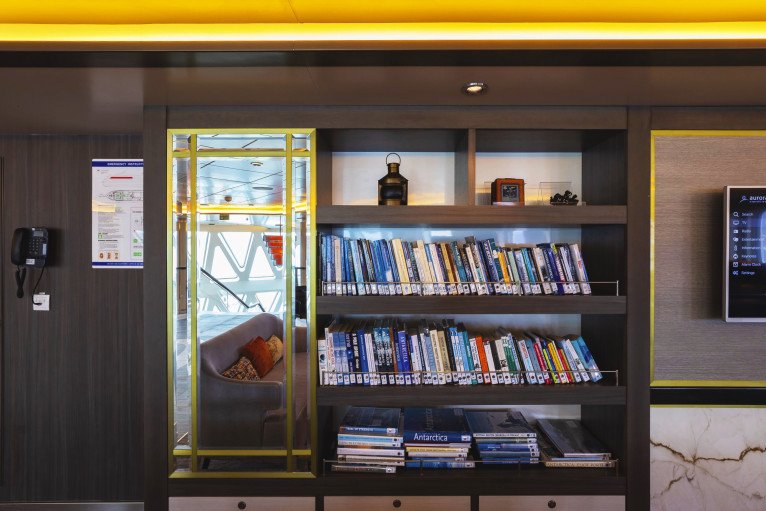Want to add a hotel stay or change your flights?
Just call our team of cruise specialists to help build your dream cruise holiday today!
Prices based on 2 people sharing. Cruise only price does not include flights. Fly-cruise price may vary by chosen UK airport.
(Prices correct as of today’s date, are updated daily, are subject to change and represent genuine availability at time of update).
Cruise only holidays are financially protected by ABTA. Fly cruise holidays are financially protected by AE Expeditions under ATOL number
Please click here to check the essential travel requirements before booking this cruise.
Itinerary



Ushuaia
Arrive in Ushuaia, where you will be met by a representative of Aurora Expeditions and transferred with your fellow expeditioners to your assigned pre-voyage hotel. If you are already in Ushuaia, we ask you to make your way to your hotel. Check-in is from 3.00 pm. This afternoon, visi... Read More
Ushuaia
Ushuaia
Cape Horn
Glacier Alley
Glacier Alley
Francisco Coloane Marine Park
Chilean Fjords
Puerto Natales
Puerto Natales
Puerto Edén
Puerto Edén
Chilean Fjords
Corcovado National Park
Castro
Puerto Montt
What's Included with
AE Expeditions
From the start, AE Expeditions was destined to be different. Our passion for adventure, exploring wild places and sharing the experience with friends burns just as brightly as it did 30 years ago, as does our preference for small-group, personal expeditions.
Explore Sylvia Earle



Dining
One of the most important parts of any expedition is the food! Whatever adventures the day holds, you will be fuelled-up with hearty meals and delicious morning/afternoon teas cooked by our onboard chefs.
Meals are a great time to soak up the expedition camaraderie in our open seating dining area. Share stories with your fellow travellers and ask our expedition team questions that may have come up during the day.
Tea, coffee and snacks are available 24 hours a day, and our chefs offer different menu options and courses for each meal. Enjoy the range of house wine, beers and soft drinks included with dinner after a long day in the wild.
We also invite you to join your captain and expedition team for informal Captain’s Welcome and Farewell drinks, with complimentary beverages and cocktail appetisers, followed by a 3 course meal.





Excursions
Although the ship is fun, the real enjoyment comes from the many shore excursions that are available. Depending on weather conditions, it may be possible for multiple landings, taking a look at everything from rock formations and ancient ruins to cute groups of penguins. We know time is of the essence in these wild locations, so the Sylvia Earle has been designed to carry 15 Zodiacs, which means you can maximise your time on shore.
From four dedicated sea level launching platforms, transfers are quicker, safer and enable you to get closer to the action for a longer period of time. Just remember to charge your camera before you step onto the Zodiac!





Observation Points
Let's face it – you don't want windowless rooms when travelling around some of the most beautiful locations around the world. This is why the Sylvia Earle is designed with plenty of dedicated observation spaces – ideal for keen bird spotters, wildlife watchers and those wanting to watch the scenery go past.
From the indoor 180-degree lounge and outdoor 360-degree open deck, both on deck 8, to the 270-degree open sundeck on level 7, there are plenty of observation points to share around the ship!



Sauna & Spa
You are welcome to visit the wellness centre during your voyage where you can use our sauna (which we highly recommend after the polar plunge!) or book a massage (additional cost applies).
Deck 8

- Observation decks
- Observation lounge
- Bar
- Top deck restaurant
- Elevator
- Seating area
Deck 7

- Bridge
- Elevator
- Gym
- Wellness Centre / Sauna
- Bar
- Swimming pool & sun deck
- Jacuzzis
- Junior Suite
- Aurora stateroom Superior
- Observation decks
Deck 6

- Upper glass atrium lounge
- Library
- Elevator
- Balcony stateroom (A,B,C)
- Balcony stateroom Superior
Deck 5

- Lower glass Atrium lounge
- Lecture room & lounge
- Assembly Station
- Reception
- Dining room
- Ship Shop
- Elevator
- Dining room
- Bar
- Citizen Science centre
Deck 4

- Elevator
- Captains Suite
- Balcony stateroom (A,B,C)
- Balcony stateroom Superior
- Expedition desk
- Main entrance
Deck 3

- Elevator
- Aurora Stateroom Superior
- Activity launching platform
- Zodiac Access Points
- Change room / Mudroom
- Medical Clinic
Sylvia Earle Cabins & Suites


Aurora Stateroom Superior




Balcony Stateroom Superior













-large_thumb.jpg)





-large_thumb.jpg)